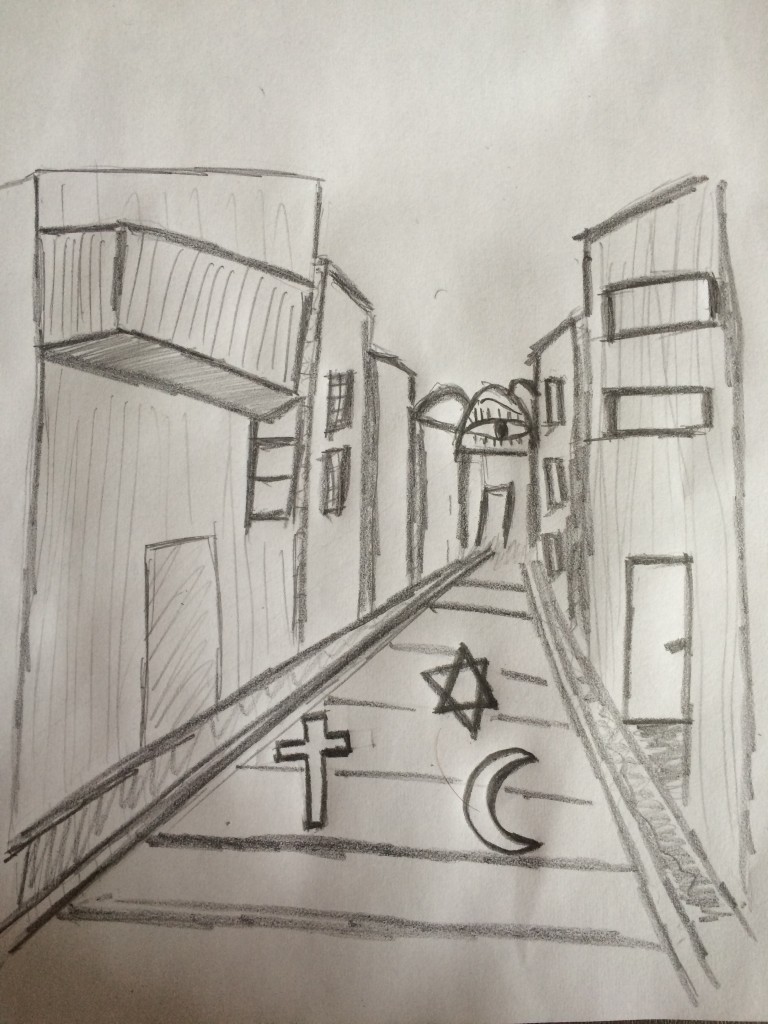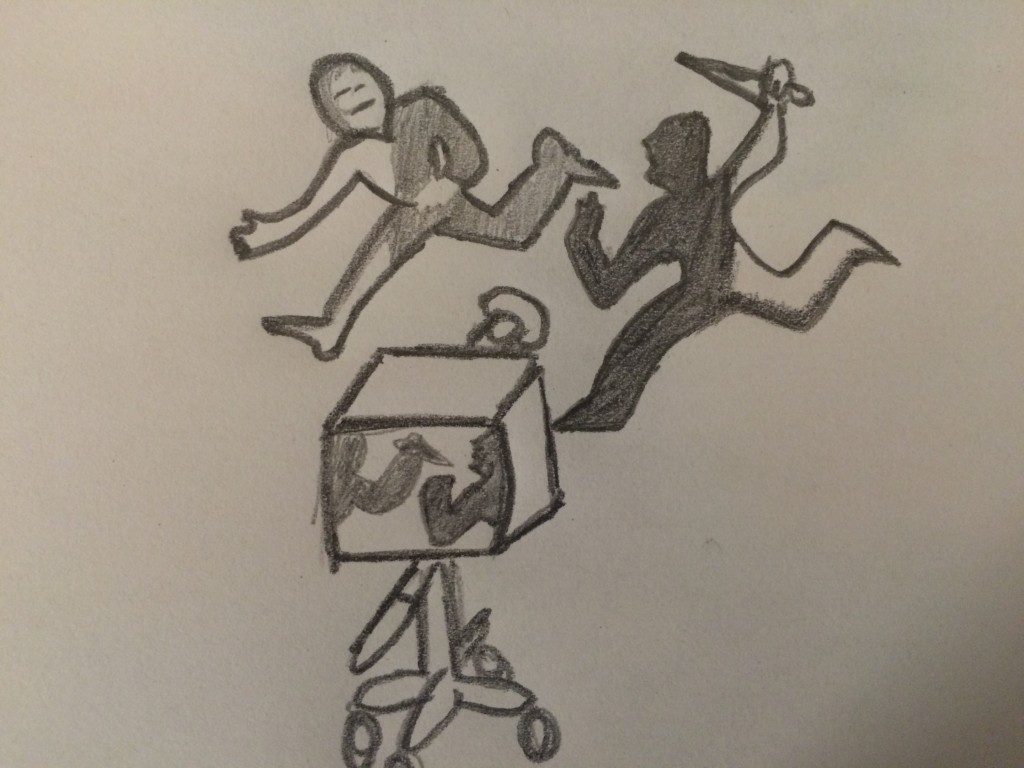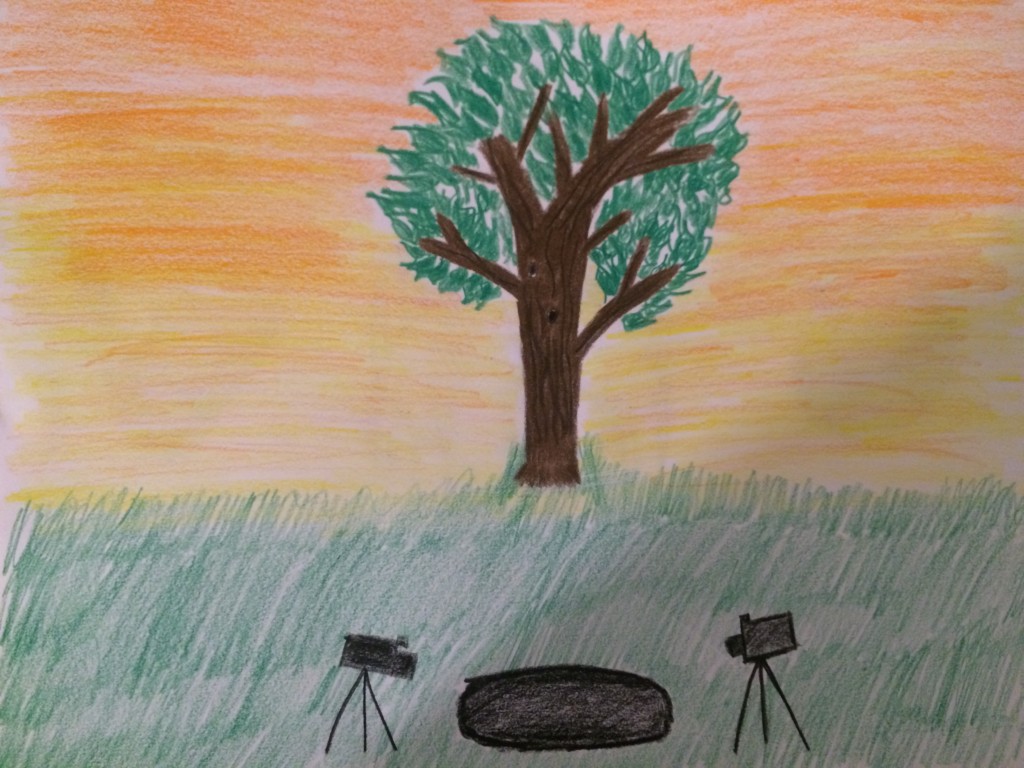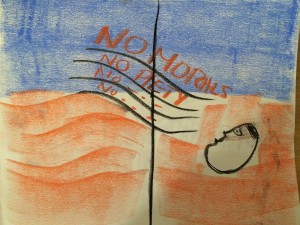Introduction
December 10th, 2015Conflict is a long and winded reality of the human condition. Recorded history shows a human track record of war and turmoil as marking the catalysts of change in the world. While conflict in the past may have arisen over disputes of land and reign, the conflicts we witness in the world today are of a considerably more abstract notion than country borders or foreign sovereignty. As a species humans have far transcended natures’ own lore of conflict which dictates ‘survival of the fittest’ and expanded the realm of thought into one of deeply ingrained human experience: namely culture. The ability to create conflict between two abstract ideologies is a dangerous and slippery slope that leaves the realm of applicable concepts which can be pit against each other wide open and never ending, essentially ensuring that a polarized world will remain so.
Many would strongly agree that one of the key ideological conflicts which has arisen and is currently taking an entrenching hold on the world is religion. While this may be true in a broad and highly unspecific sense, this is actually a misnomer. Religion in and of itself is a concept of multiple prongs embodying culture, politics, geography, time, social status, tradition and a multitude of other varying elements which come together under an umbrella term. These factors are then grouped together and guided by a particular ideological pathway. Giving this idea more credence and applicability, one of the main conflicts we see in today’s world revolves around Islam and its practice. However, the truth is nobody has seen or heard Islam do anything, and one must take the surrounding circumstances into consideration.
The methods by which Islam has come to be seen as a religion incompatible with modern life in the western world culminate in an exclusionary principle which creates an image of Muslims as being the ‘other’ form of being. Through this exclusion, Muslims become associated with a religion which is seen as incongruous to western life. In reversing this, we must hear the voices of those who have been excluded. Through the use of art and literature, we may hear these voices come to life, and develop a deeper understanding of the realities of religion, be it Islam or otherwise, and the reality of the driving forces which guide societies which are somewhat affiliated with said religion.
Through many of the readings we have seen, the majority of religious followers did not begin their following through a deeper search of value and moral coding which may coincide with their own life philosophies, perhaps satisfying a greater need to simply believe and justify our existence as servicing a higher power. Rather, it more likely began through means best described by the laws of inheritance. Without a doubt, there exists a plentiful number of those who fall into the former category, but for the most part, the vast majority fall into the latter category. Being born into a family of individuals who identify as Muslims will, for the most part, make one a Muslim by inheritance, regardless of the degree to which one chooses to practice their faith or acknowledge its teachings. The same may be said for all other religious followings. As we witnessed in the work of Carl Ernst, Rethinking Muhammad in the Contemporary World, countries will often ask for the religion a person identifies with; if they are atheist, they must still identify as a Christian-Atheist, a Muslim-Atheist or a Jewish-Atheist based on their ethnic or geographical descent.
This seemingly genetic ingraining of religion is not simply a feat of human quantification and categorization, but a subtle sign of the immense role religion plays in the writing of human history, present and future. The cultural normalities which can be traced back to religion (whether they are truly teachings of said religion is another matter) are significant. For example, through ‘An Egyptian Childhood’ by Taha Hussein, I believe we come to see the true impact religion has in determining the fate and outcomes of hundreds who blindly follow those who claim to speak in the name of an all-powerful God and the Quran. Three aspects sparked my interest through the reading and deserve to be touched on individually since they divulge issues which are significant in a global sense:
1) Religion had a deeply entrenched value in the determining of social status;
2) There is a wide but also often misguided following of ‘religiously enlightened’ individuals;
3) Those who claim to be experts on Islam based on their religious education rarely employ the teachings of the religion beyond the superficial facade and social spotlight.
While this is clearly not an exhaustive list of factors which come into play in the practice of religion, they do open our eyes to the social and cultural implications which do factor in considerably, giving credence to the notion that describing Islam as a uniformly practiced religion is an absurd one. If we are to take the small village in south Egypt as a microcosm incorporating all the necessary elements, we may see why Islam is often misunderstood, misinterpreted and miscommunicated. However, this brings me onto a critical point which exists comparably in the world today. Religious ‘scholars’ often feed on the open minds of the uneducated and those who know no better. They operate under the hood of religion, inciting unfortunate individuals to ‘die for their religions’ while in fact forwarding political agendas through warfare or otherwise. The truth is, the interpretations of the ‘Sheikh’s’ are often as fallacious as their religious practice. Generally speaking, the religious authority which guides peoples’ practice of religion in their given country. Naturally, religious authorities disagree and so their varied interpretations of religion and the varying beliefs of religious scholars are not a fool proof way of understanding the religious basis upon which people practice.
Diving into the cultural inclinations, many of the readings show the value placed on the mystical aspects of religion, which are often lost in the depictions of Islam despite forming a large part of religious practice. However, this also gives credence to the idea that the marginalized treatment of women which is often criticized and blamed on Islam may also be a cultural rather than a religious addition. Through readings such as ‘We Sinful Women’ and ‘Sultana’s Dream’, there is an immediate imposition of the notion that one is sinful simply for being a woman. The collective ‘We’ adds to this effect in that it extends the attribute to all women, instead of a title which refers to a select group of women who have committed some sinful act. This theme of sinning is also apparent in Sultana’s Dream where there is an overriding element of pious living in the Ladyland that is ‘governed by virtue itself’. It is important to recognize that Ladyland is, in a manner, a utopia for women which serves to paint a juxtaposed image of reality. Hence, one can assume that the reality for women at the time was something with semblance to a dystopian reality. One need look no further than the zenana to realize what kind of life these women led.
However, throughout the readings the question arises: what serves as a justification for this marginalized role of women in society? The question is partially answered in poems. Early in the introduction we learn that women were often not afforded education on the basis of religion. The use of religion in other contexts may offer some justification, but still does not explain the entire picture. Additionally, the dream spoke briefly of the religion followed in ‘Lady Land’ as being one which fosters love, care and forgiveness. Perhaps this is a mimicry of the men who promote themselves as being men of a religion which supposedly promotes peace and love and yet use the same religion to justify marginalization of women. Reading the actual religious scripture on women indicates a religion which actually promotes women’s rights.
In culmination, we must see the effects of religious exclusion on individuals who are forced to question whether their identities are at odds. A prime example of this comes in the Reluctant Fundamentalist. The plethora of cultural, personal and ideological domains which are posited by Mohsin Hamid are overwhelming, but the overriding motivations and interactions which drive events are ones which I can, by and large, understand to a great degree beyond their superficial manifestations. Quite critically, the primary force behind the novel is once again the notion of a modern west driven by science and progress as opposed to an eastern backdrop which is diminishing into a state of ruin and downfall. These dichotomous systems are perhaps best portrayed by our protagonist, Changez, who externally presents as a modern, Princeton educated wall street executive, but internally suffers an inability to reconcile his diminishing Pakistani roots and faltering old-family wealth. The description of his Pakistani home as a dilapidated structure of questionable integrity, which holds in the cracks of the wall a history of grandeur and luxury, is perhaps quite a beautifully saddening embodiment of the plight of many eastern nations. The way this is conveyed and presented forms a critical part of the novel, since it is tantamount that western readers understand the sense of loss that many individuals feel with regard to their nations, and often blame on western involvement in these countries, further fueling the hatred and tension which can often be a tangible motivational factor.
Besides this point, however, in the life Changez initially comes to lead in the US, he describes himself as engaging in the usual rituals and rites of passage of the average American college student. However, what was apparent to me early on and only becomes apparent to Changez later, is that the distinctions between west and east go beyond science and traditionalism. While Pakistan is presented as a country with a storied history which is told by the sands of the nation and whispered in the night winds, America is presented as a country obsessed with an image of itself that is attempts to uphold for the sake of an international appeal akin to the ideology of the American dream. Changez is initially enthralled by the acid treated buildings of Princeton as he thinks of himself as a young Pakistani prince who has come to take the university by wonder of his wealth and exoticness. The very foundation of this existence is devoid of reality in a way which allows Changez to divest himself from the realities of life around him and become enamored in the images and ideals which are superficially upheld and presented. Looking at this more closely, the ideals presented in the opening of this novel are ones which are shared among many here at Harvard. The ivy league education which ultimately leads to 80K a year straight out of college is a lifestyle many seek and see to be in accordance with the dream Changez once had. With no offense to those who have a passion for the economics of the stock market, it is often the case that the image of a lifestyle precedes happiness and a closer look at reality when making such decisions in an environment fueled by a pressure to live a particular lifestyle.
What is more pressing to me, is the realization Changez comes to post 9/11, when the color of his skin, and the image of the American dream became incongruent aspects of existence. Numerous factors come into play at this point, from the need for self-identification through a beard for instance, or the automatic association of his skin color with his being Arab. The novel shows how the rise of a nostalgic America in the wake of 9/11, and the outcomes of this catastrophic event, drastically change what it means to be Muslim in the western world and the perceptions of America in the east.
In the wake of recent attacks and the dramatic events which have been occurring over the course of the past few months, the realities of Changez’ struggles become ever more apparent in today’s world. Intolerance and misunderstanding is worse than ever on both sides. It saddens me that every step towards the fostering of relations between nations, religions or regions are thwarted by the proponents of terrorism and extremist ideology. Statistics say that humanity is at its most educated state in history, and yet ignorance is at its critical peak. One can only blame ignorance for the reasoning behind those who claim that ‘importing’ muslims should stop, or that a refugee crisis caused a terrorist attack. It infuriates me that these issues become the topics of discussion in such situations, trivializing the victims of the attacks and marginalizing the pains of their friends and families. I hope that a day will come when the response to such attacks will be the unity of humanity in the face of organizations which wish for nothing but to see the world burn. Perhaps then we will realize that fighting among ourselves only furthers their cause, and that with every attack we only divide the cause of humanity further by pointing fingers and shifting blame. Einstein once said that stupidity is repeating the same thing over and over but expecting a different outcome. I don’t think governments have gotten the memo yet.



 Posted by moebied
Posted by moebied





